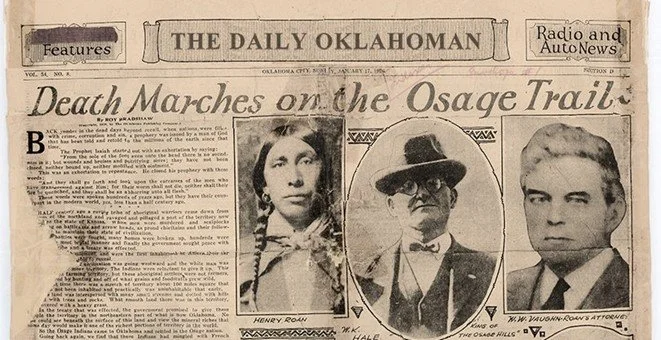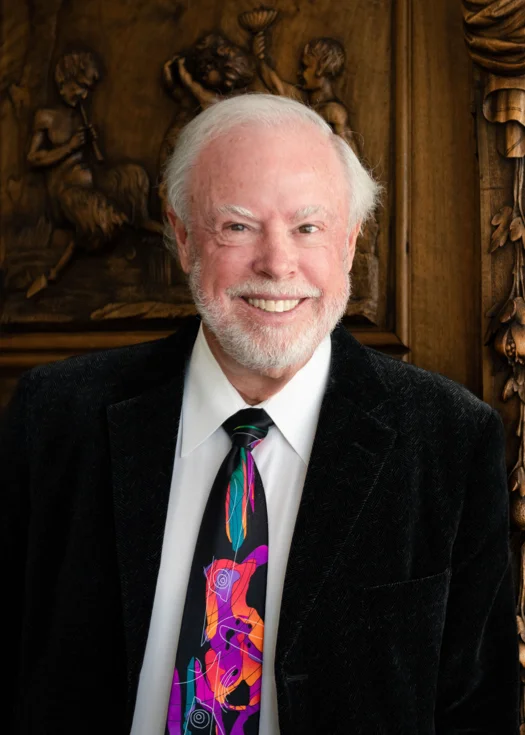By Kristin Michaud (Anishinaabe) & Shannon Kilpatrick
With the recent release of Martin Scorsese’s Killers of the Flower Moon, and in honor of Native American Heritage Month, we are exploring how equality and equity rely on accurate representation of a people, culture, and event. Native people have long been misrepresented in film (think back to the 1950s Westerns) by non-native filmmakers, writers, and actors who alternated between romanticizing Native culture to derogatory racial stereotypes.[2]
In the last 30 years, great strides have been made toward accurate representation in film and TV. The first film to be written, directed, co-produced, and acted by Native Americans was Smoke Signals – released only 25 years ago.[3] Many have followed since, including the notable recent TV series Reservation Dogs, which follows life on the reservation for Native youth on the Muscogee Nation in eastern Oklahoma – again written and acted by Native American and First Nations actors, as well as directed by Sterlin Harjo (Seminole, Muscogee) and well-known director, Taika Waititi (Māori).[4]
In telling the story of the Osage’s ‘Reign of Terror’, Scorsese tries to correct the wrongs in earlier filmmaking by extensively consulting with the Osage Nation, hiring Native consultants to assist with historical accuracy and language, and casting Native actors to accurately represent the Osage who are depicted in the film. Even still, the movie is a non-native representation of Native history, directed by Scorsese and based on the book by non-native author, David Grann.[5]
Briefly referenced in Grann’s book is much less well-known native author John Joseph Mathews (Osage),[6] who wrote about the same events that are the subject of Killers of the Flower Moon.
Mr. Mathews was one of the first Indigenous authors to receive national acclaim. He was born in Pawhuska, Oklahoma, the capital of Osage Nation, in 1894 and knew and lived among those depicted in Scorsese’s film. His first book, Wah’Kon-tah: The Osage and the White Man’s Road, was an unlikely national bestseller about the history of the Osage from 1878-1931.
Two years later, he published his novel Sundown, which explores the impact of the oil boom on his people. If you’ve seen Scorsese’s movie or read Grann’s book, Sundown tells a tale you will find familiar: a WWI veteran returning to oil-rich Osage land and his struggle to find his way. One notable difference between his book and the Grann/Scorsese telling is quickly apparent. In Mathews’ telling, the veteran was Osage – where he was non-native in Grann and Scorsese’s representation. The movie has received criticism from some Indigenous people for centering the story on the white character played by Leonardo DiCaprio, rather than on the native people who were the victims of the white greed, violence, and cruelty.[7] Other native actors have criticized the violence in the movie for being “painful, grueling, unrelenting and unnecessarily graphic” which ultimately “normalizes” violence committed against Native women.[8]
In the words of author and professor Thomas King (Cherokee) in his book, The Inconvenient Indian, “[Y]ou have to be careful with the stories you tell. And you have to watch out for the stories that you are told.”
[1] Daily Oklahoman, January 17, 1926 (2012.201.OVZ001.3441, Oklahoma Publishing Company Photography Collection, OHS.
[2] For a comprehensive history of the depiction of Native Americans in film, we suggest Reel Injuns (2009) Watch Reel Injun (2009) – Free Movies | Tubi (tubitv.com)
[3] Smoke Signals (1999) – Based on Sherman Alexie’s (Spokane) book “The Lone Ranger and Tonto Fistfight in Heaven’, What Smoke Signals Means 20 Years Later – JSTOR Daily. Readily available through streaming platforms.
[4] Reservation Dogs – currently available through Hulu streaming platform. ‘Reservation Dogs’ smashes stereotypes of Indigenous people | AP News
[5] Killers of the Flower Moon | David Grann
[6] Read more about Mr. Mathews at https://www.theringer.com/movies/2023/10/20/23924757/killers-of-the-flower-moon-osage-oklahoma-john-joseph-mathews#:~:text=It%27s%20the%20story%20of%20a,or%20a%20version%20of%20it
[7] See https://twitter.com/theheadknight/status/1714284513805914451; https://www.latimes.com/entertainment-arts/tv/story/2023-10-26/killers-of-the-flower-moon-movie-lily-gladstone-osage-nation-native-american-voices
[8] https://twitter.com/kdeveryjacobs/status/1716510731896553787

